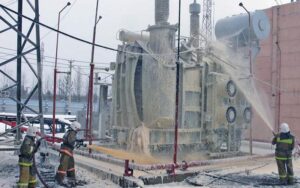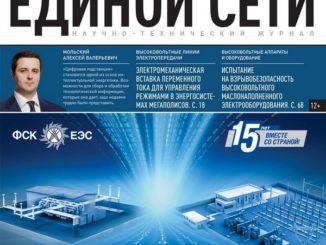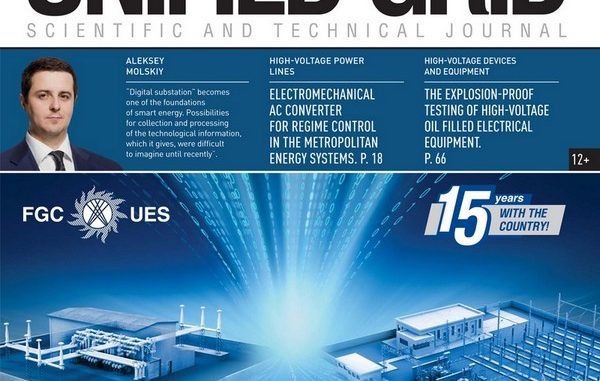
Перейти к списку статей номера
Electromechanical ac converter for regime control and shortcircuit current limitation in the metropolitan energy systems
Authors: U.A. Dementiev, Research and development center at Federal Grid Company of Unified Energy System, JSC, P.V. Sokur, Research and development center at Federal Grid Company of Unified Energy System, JSC, U.G. Shakarian, Research and development center at Federal Grid Company of Unified Energy System, JSC, A.V. Maiorov, Energokomplex, JSC, A.M. Shabash, Energokomplex, JSC, D.N. Jarosh, Research and development center at Federal Grid Company of Unified Energy System, JSC, N.D. Pinchuk, Power Machines, PJSC, V.S. Tretiak, Power Machines, PJSC
Keywords: electromechanical AC link; short-circuit current; electrical machine.
Abstract: The dense energy system of any metropolitan city is characterised by a considerable energy consumption, high generating capacities and relatively short power transmission lines of 110–500 kV voltage ratings. Both international and Russian practices confirm that the energy consumption in metropolitan cities tends to a sustainable growth. As a result, short-circuit current (SCC) levels in 110/220 kV metropolitan grids exceed 63 kA which is more than the maximum breaking current of industry-standard circuit breakers.
The features of metropolises power grid are high short-circuit currents, which are also a deterrent to the development of the power grid. Complex grid confi guration imposes restrictions on the flexibility of the operating mode of the power system. The application of an electromechanical AC link allows to limit the growth of the short-circuit current when combining the open sections of the grid, to regulate the reactive power (voltage) within wide limits, to control the active power flows through a link.

Selection of type, control systems, and rules of regulation of series compensators
Author: V.K. Fokin, Research and development center at Federal Grid Company of Unified Energy System, JSC
Keywords: electromechanical AC link; short-circuit current; electrical machine.
Abstract: The article analyzes the experienceof using longitudinal capacitive compensation (CCP) devices used in AC networks with a voltage of 500 kV andhigher either independently or as part of fl exible AC power transmission lines. Such devices allow:
– signifi cantly increase the capacity of electrical connections to the required static and dynamic stability reserves;
– redistribute power fl ows along lines within sections between power systems, as well as between parallel lines in electric networks, ensuring acceptable and optimal line loading and reducinglosses of electric energy;
– normalize the voltage levels of the electrical network, especially if there are long-distance power lines;
– ensure effective damping of electromechanical oscillations between power systems;
Foreign experience in the operation of the CPC testifi es that the greatest application is found for uncontrolled devices (NUPCs) and controllable ones (UPRK-B) with switching of vacuum or SF6 circuit breakers in 500 kV and higher networks, where a preselected correction of branch parameters is required to increase the capacity of the electrical system and optimal redistribution of fl ow. The article concludes that, in comparison with the UCPK-B, the thyristor devices of UPMK-TK are high-speed, but more expensivedevices. They can damp electromechanical fl uctuations between power systems and oscillations of the rotors of generators of electric stations operating on long-distance power lines far from the nodes of consumption. At the same time, feasibility studies should be made of the selection of USK-TC with other alternative options, for example, the use of transverse compensation devices (SC, STK, STATCOM, etc.).
Thyristor devices of smooth control of TCSC are universal most quickoprating devices performing the whole range of control. Being the most expensive, these devices enable to prevent and suppress capacitive self-excitation of electric machines, prevent the development of subsynchronous fl uctuations and torsional resonance. Choosing these devices requires special technical consideration and feasibility study.
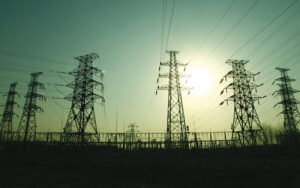
Filtration of higher harmonicsin electrical grid in dynamic environments
Authors: G.M. Mustafa, LM-Invertor, Jsc, S.I. Gusev, LM-Invertor, JSC
Keywords: passive fi lters; active fi lters; amplitude and phase modulation.
Abstract: The problems of dynamic filtering ofharmonics using passive LC-circuits and pulse-width modulated convertersare considered. It is shown that high-quality resonance fi lters inconditions of dynamically changingnetwork load not only do not improve, but even worsen the situation. Highfrequency PWM transistor voltage converters allow the synthesis of filters that effi ciently absorb network harmonics, even when they are modulated in amplitude and phase.
In recent years, the presence of high harmonics in circuits has become an issue of concern. International (IEC, CIGRE) and Russian companies (GOSSTANDART, PJSC FGC UES, part of PJSC Rosseti Group of Companies, PJSC Rosseti) prepare new regulations on quality and fi ltration. Under such conditions, active fi lters are recommended for designed facilities subject to dynamic loads.
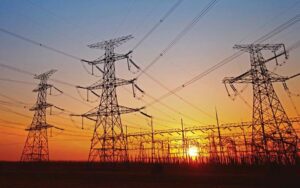
Power grid facilities life cycle control. Regulation and selforganization synergy
Authors: A.N. Antonov, Poligon, JSC, S.S. Buchurina, Plekhanov russian university of economics, A.V. Bashnin, Poligon, JSC
Keywords: multi-agent systems; BIM-technology; PLM-systems; regulation; data quality; ontology; knowledge base; intelligent systems; information model.
Abstract: Regulatory in the most general sense forms the basis of traditional management systems. Such a system can be defi ned as a way of alienating and accumulating expert experience. Intraditional management systems, the statistical approach prevails, it makes management extremely sensitive to the quality of corporate data. The transition to the concept of the life cycle should take into account the differences in the logic of management of each stage, the real potentialitiesfor regulating the processes of the stage. The domestic experience in creating multi-agent systems makes it possible to integrate twoapproaches of accumulating expert experience: traditional, in the form of texts of regulations; Instructions;Business processes; Libraries and so on. And dynamic, formed «according to the situation» on the basis ofknowledge accumulated in the subject ontology.
In recent years, the presence of highharmonics in circuits has becomean issue of concern. International (IEC, CIGRE) and Russian companies (GOSSTANDART, PJSC FGC UES, part of PJSC Rosseti Group of Companies, PJSC Rosseti) prepare new regulations on quality and fi ltration. Under such conditions, active fi lters are recommended for designed facilities subject to dynamic loads.

Application of arcless source of impulsive pressure for explosion-proof testing of highvoltage oil filled electrical equipment
Authors: L.A. Darian, Technical Inspection UES, JSC, V.P. Polishchuk, Joint institute of high
temperatures RAS, A.V. Shurupov, Joint Institute of high temperatures RAS
Keywords: paper-oil insulation; arc discharge; explosion safety; gas formation; arcless source of impulsepressure; transformer oil; transformer failure.
Abstract: The test procedure for high-voltage oil fi lled electrical equipment (VMEO) for explosion safety is considered. An arc-less source of impulse pressure is described, which is designed to simulate the effect on the VMEO of an arc discharge due to an internal short circuit. A technique for applying this source has been developed. On the example of testing current and voltage measuring transformers, the experience of using BIID is generalized. The tests of the damper system of protection of the VMEO from the explosion were carried out.
